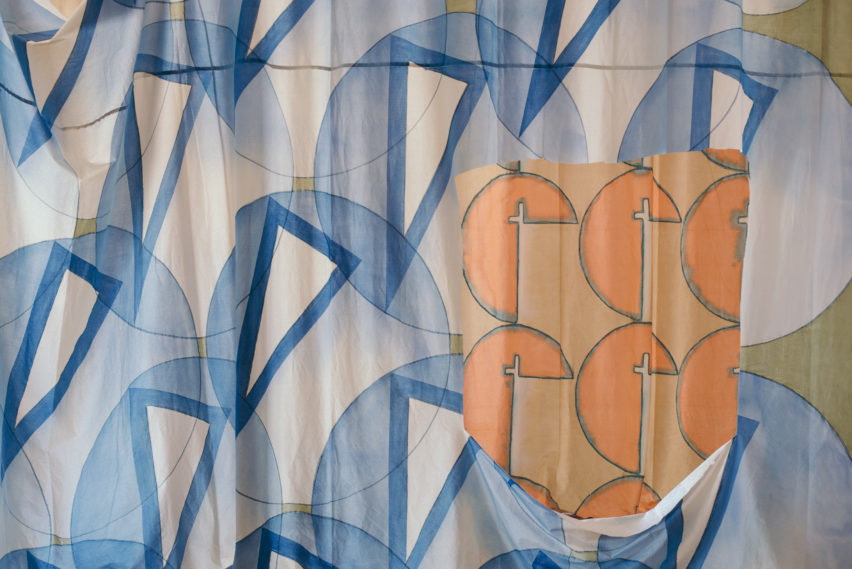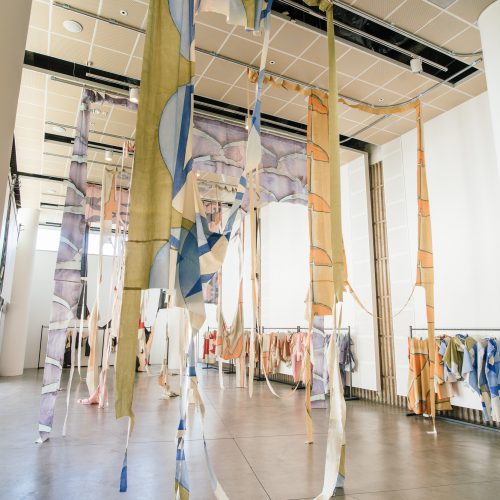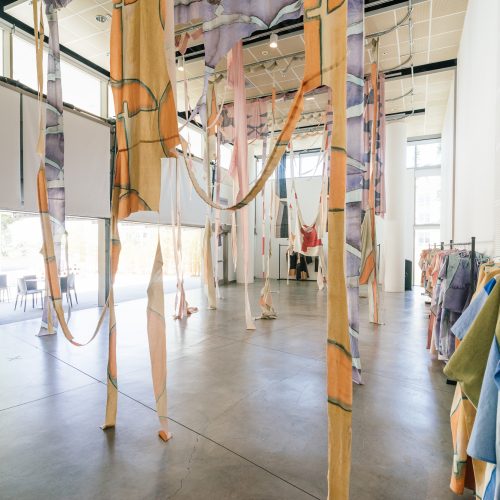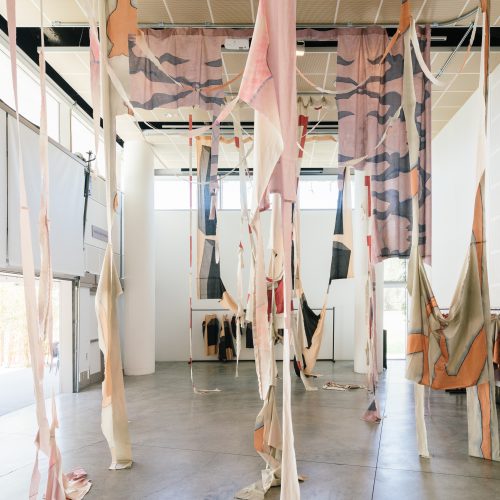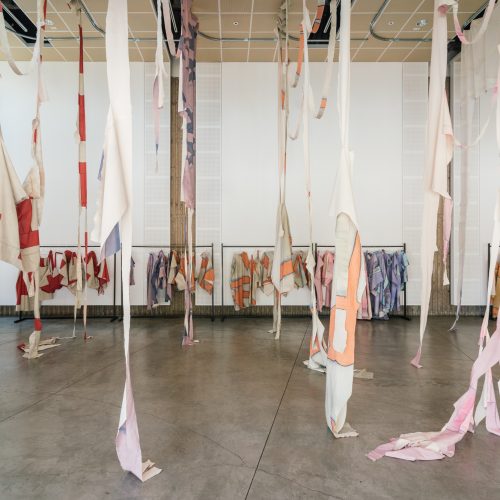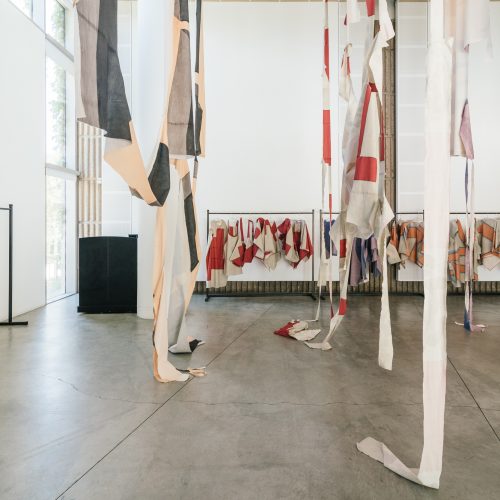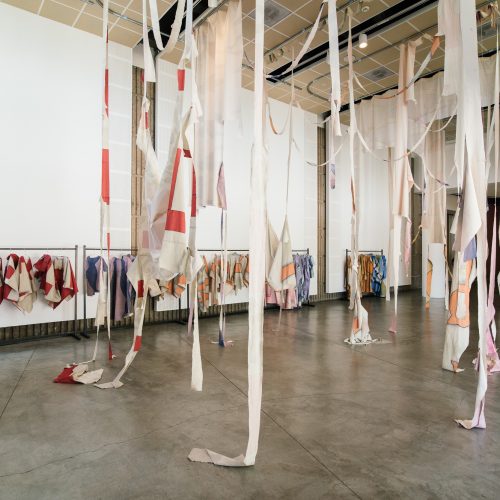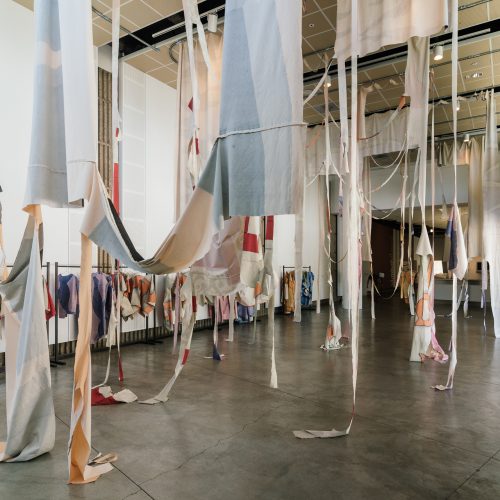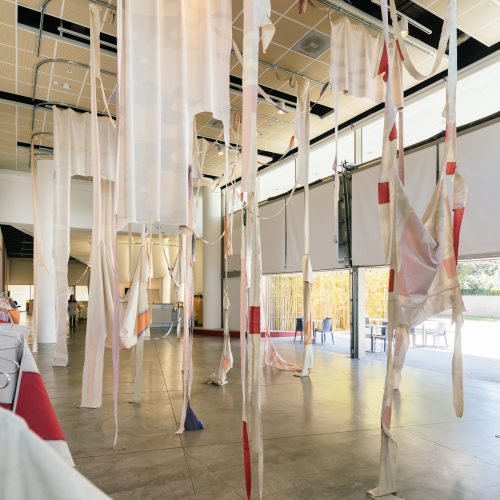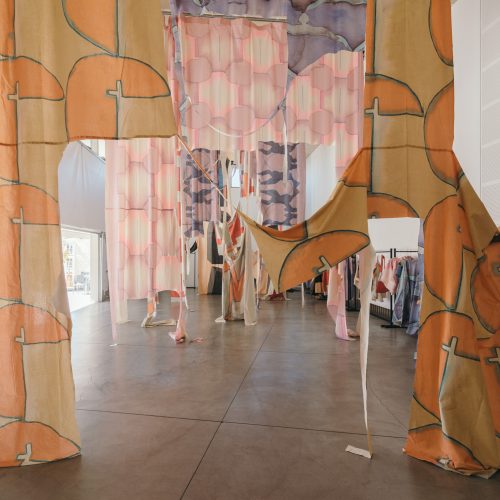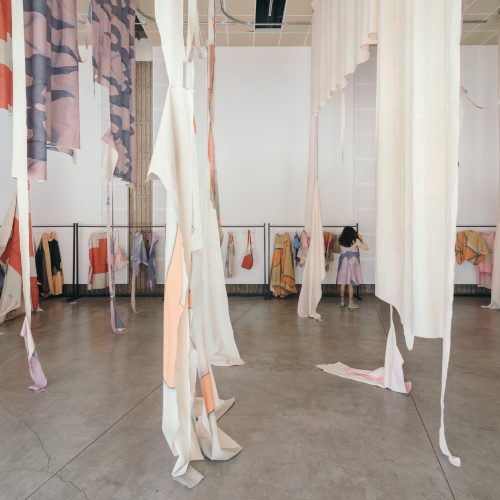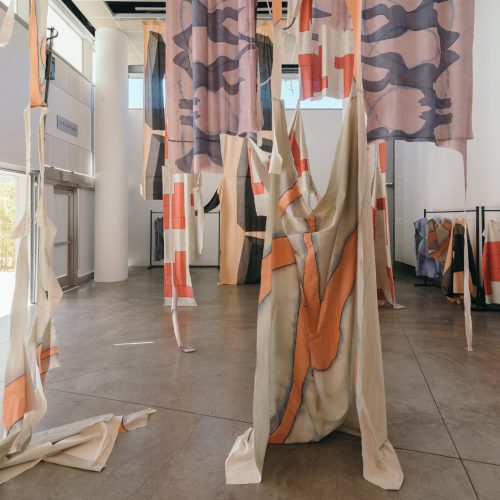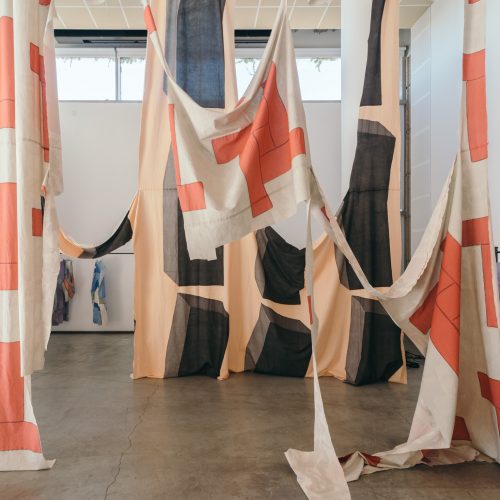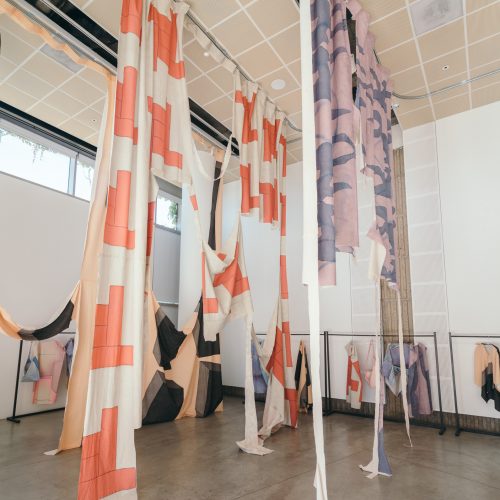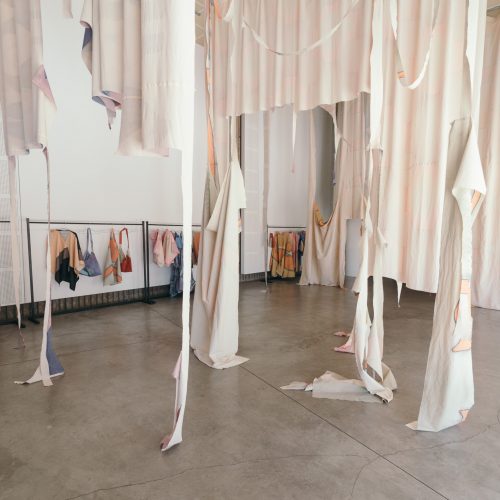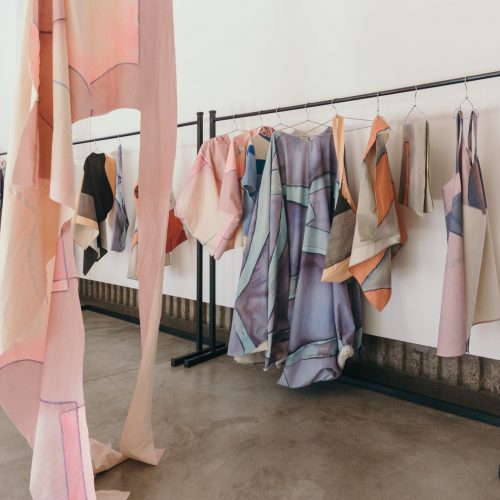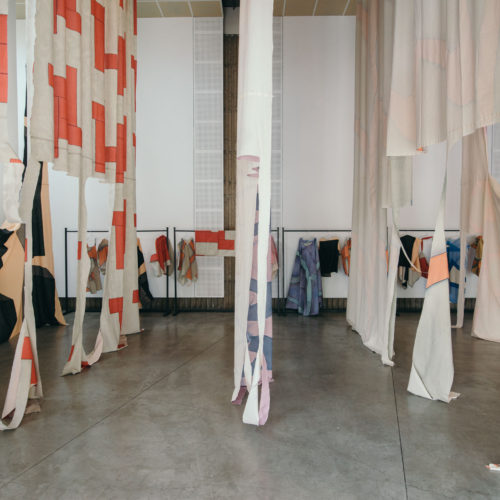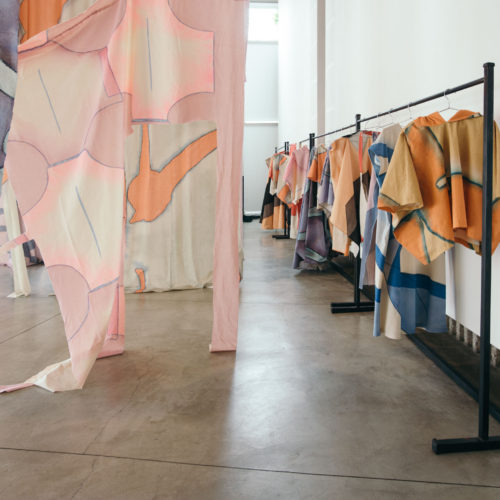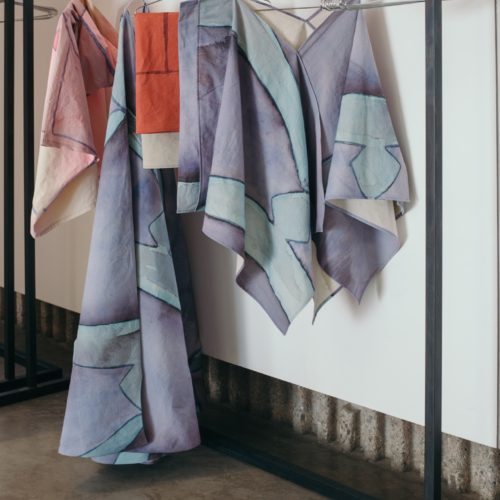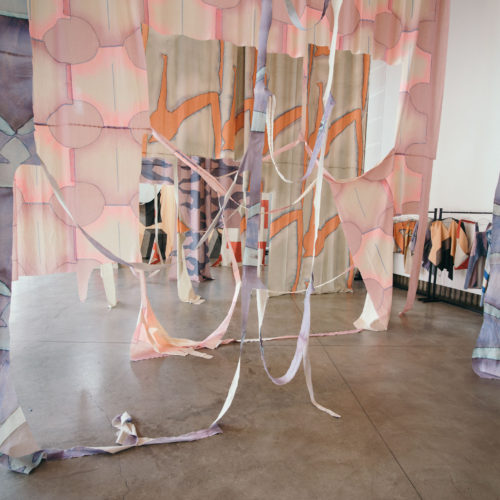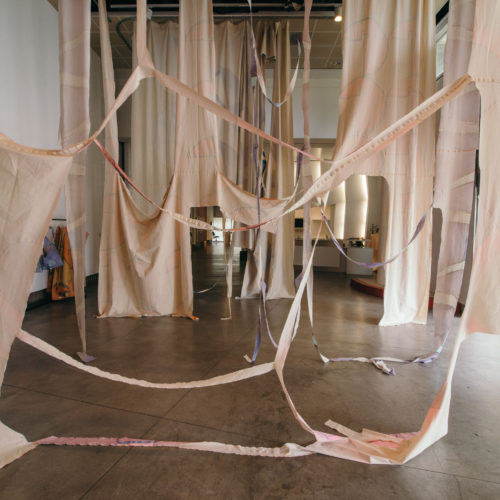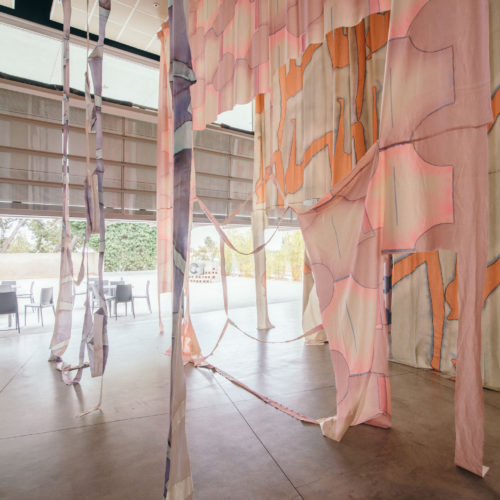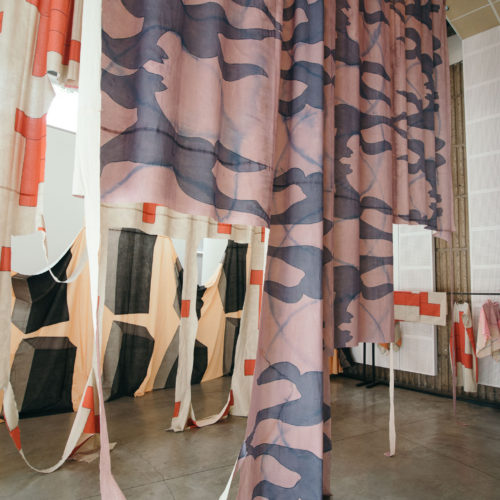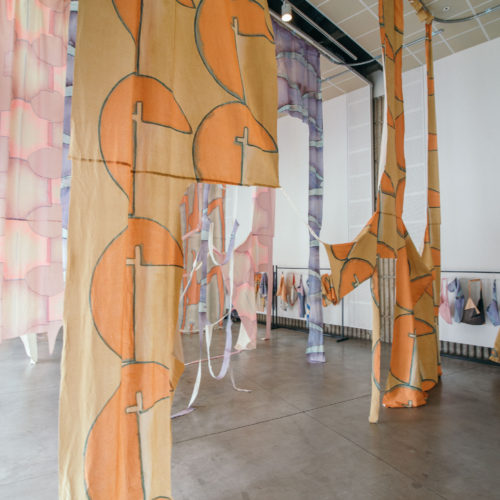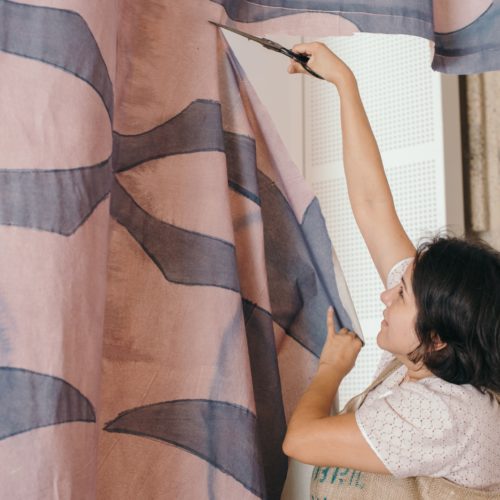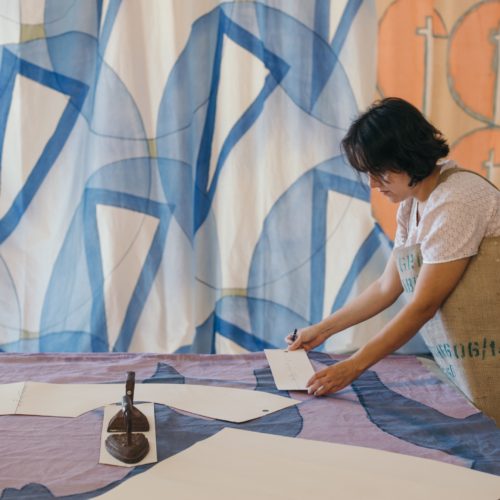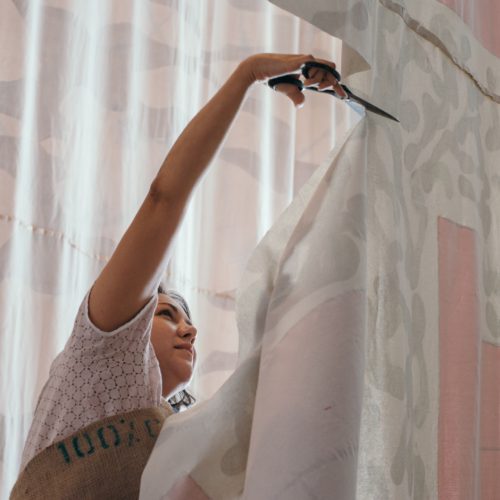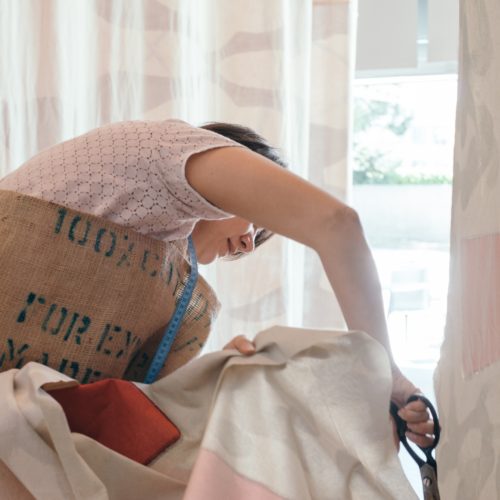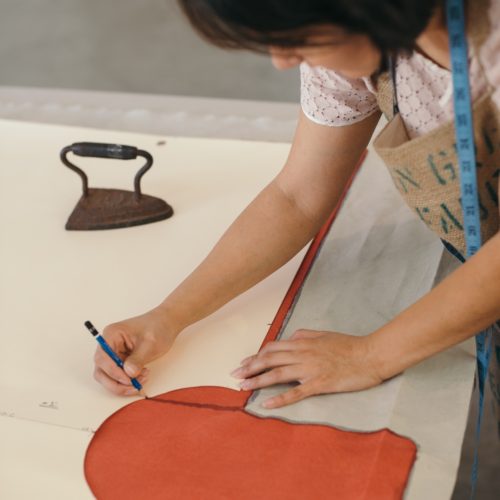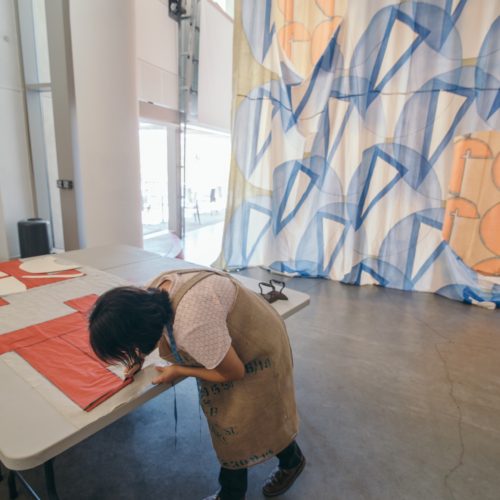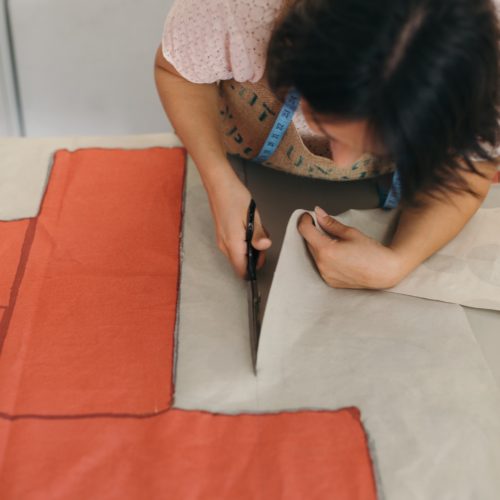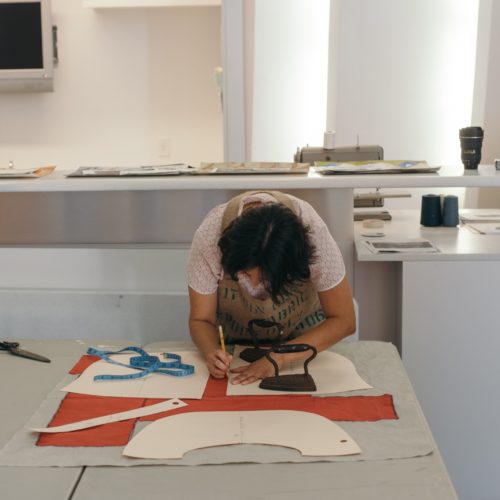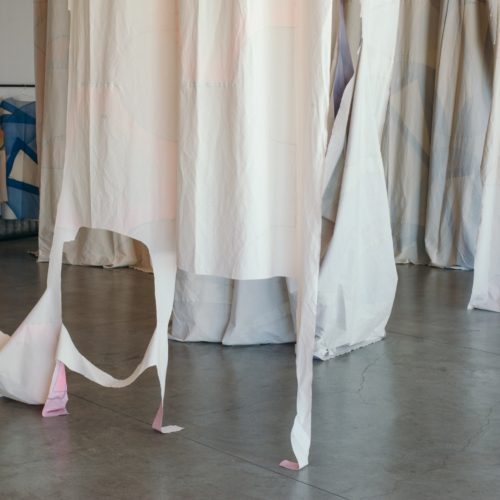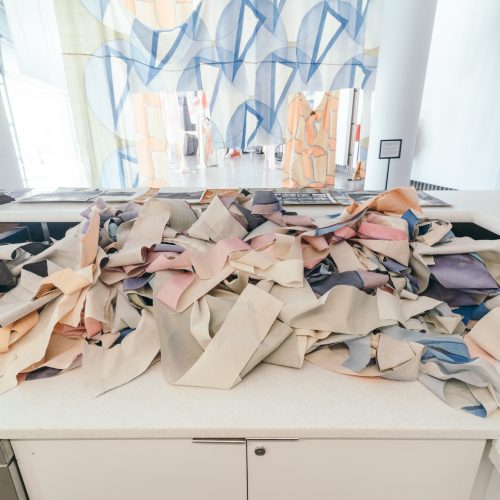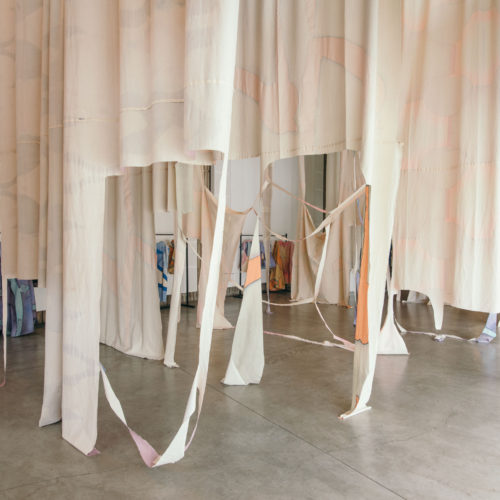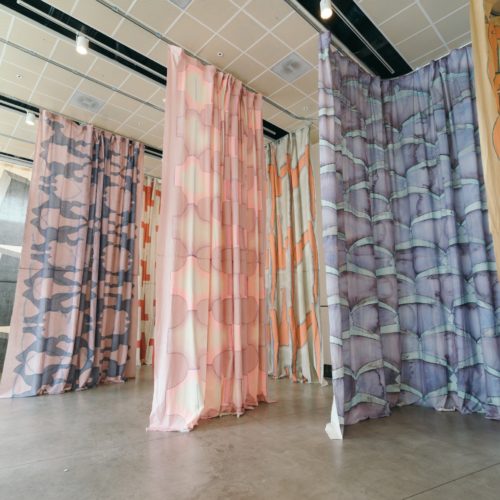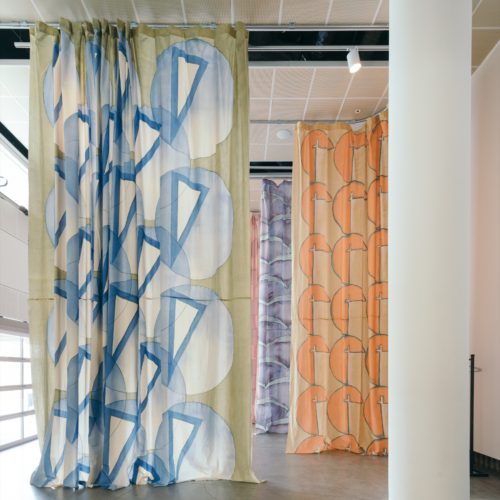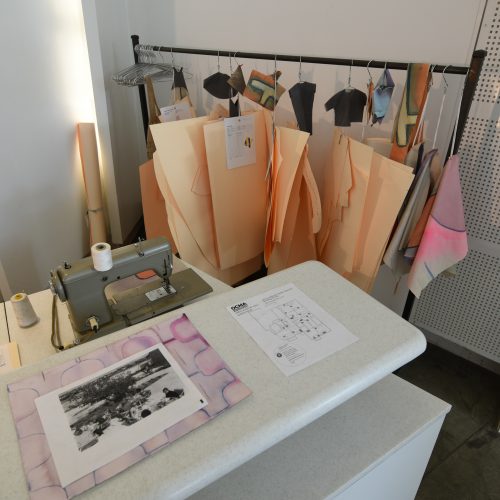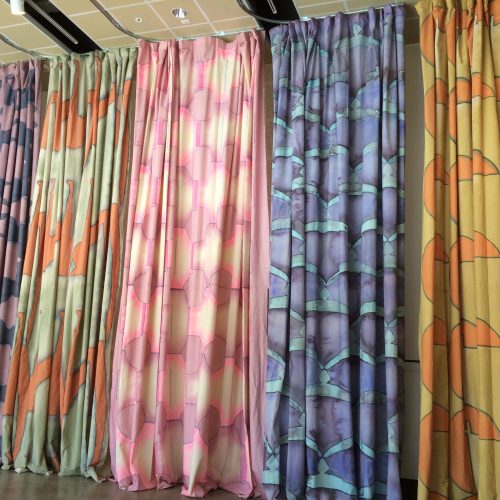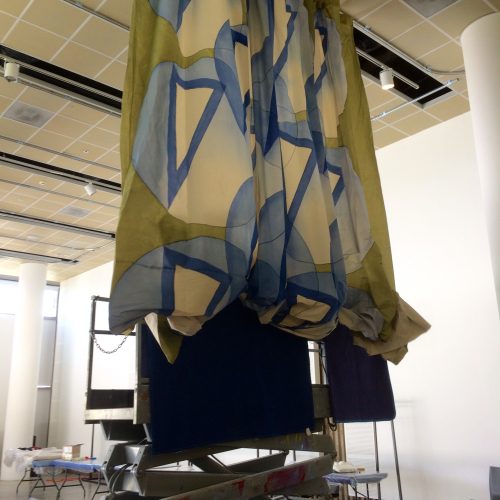Place On-Fold
2017
Place On-Fold is a work comprised of eight 24 feet x 24 feet hand painted muslin fabrics that hang over 20 feet high on railings. The pavilion space, the site where the work is situated, exists as a space in constant transition. It is a rental venue for weddings and parties, was once a cafe, and it was also the site of the museums sculpture garden before its current remodel.
The work begins at a structural scale and, during the course of the exhibition, is brought down to a human 1:1 scale. During the exhibition, I come in twice a week and cut sections of the hanging fabrics on site. I then place and trace clothing patterns that I have designed on the cut sections and recompose the design to fit on the body (creating a new composition). The cut but un-sewn garments are made into bundles that are taken to get sewn to my grandmother and mother who both worked in the fashion industry in the 1990’s. The work is finished when all the fabric is cut out, leaving very thin shreds of fabric to hang, making visible a pallet of garments hung on racks along the pavilions perimeter walls.
The painted designs on the fabrics are inspired by pictures from the museums archive of the sculptures from sculpture garden. I composed the patterns on the grid, to reflect the structure and scale and ordering of space and architecture. When placing the garment patterns over the cut fabric, I recompose the designs over the human form as dress patterns are a way of ordering the curvature and form of the body.
With Place On-Fold, I wanted to respond to the idea of being in a state of in-betweenness and have the work converse with the premise of the exhibition: Building as Ever. The work is constantly in between painting and design, between a decorative backdrop and an evolving and deconstructing structure in ruin. The work is converses with fashion and its language of pattern-making, fashion design, production and sewing yet it is still, in its entirety, a painting.
I work with muslin/manta fabric because it represents a movement between classes and it also has become, in the context of my larger practice, a metaphor for the idea of meztizaje, the cultural blending of the Indigenous with the Spanish that comprises the idea of the Mexican identity.
